 General
General  General Archive
General Archive  The 20 Biggest Cleveland Sports Stories That Would Have Broken the Internet - Part 2
The 20 Biggest Cleveland Sports Stories That Would Have Broken the Internet - Part 2
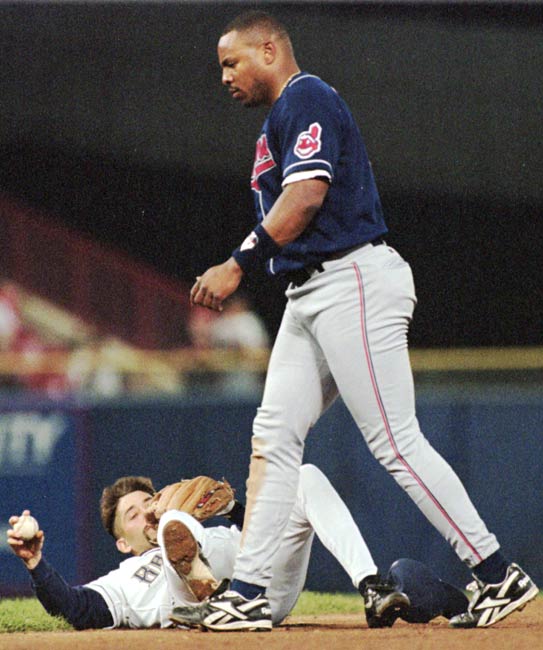 A few weeks ago, while at the Indians game with some of our fellow writers at The Cleveland Fan, there was a point in the game where we looked around and seemingly everyone in our group was busy looking down and tapping away on some kind of device.
A few weeks ago, while at the Indians game with some of our fellow writers at The Cleveland Fan, there was a point in the game where we looked around and seemingly everyone in our group was busy looking down and tapping away on some kind of device.
Being the only person in the group without a smart phone made us realize how much technology and social media has changed the way we watch and interact during sports events. We can be at home on the couch, at the stadium or the arena, and still interact with a community of Indians, Browns and Cavs fans across the country and around the world through Twitter, Facebook and e-mail. (And that doesn’t even take into account the numerous high-quality fans sites devoted to Cleveland sports).
That got us thinking about some of the biggest Cleveland sports moments in our lifetime in the pre-blog and social media era, which we are defining as anything before 2004. Because while Syknet may have become self-aware in 1999, sports blogs didn’t become prevalent in town until 2004, the same year Facebook was created, and Twitter did not launch until 2006.
So we came up with the 20 biggest sports stories that would have made the Internet blow up in Cleveland had these various social media platforms existed at the time. Today we present Part Two, highlighting No. 15 to No. 11. (You can find Part One here).
15. Joe Tait leaves Cleveland
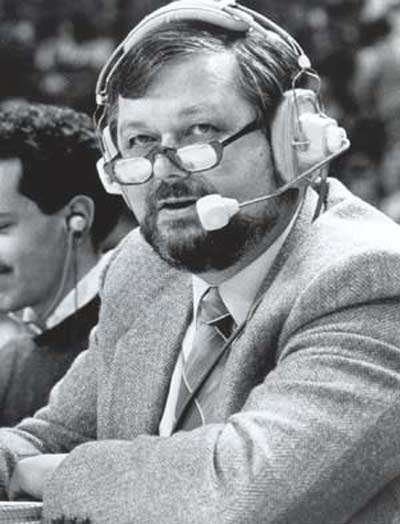 During the 1980-81 season, the Cleveland Cavaliers struggled to a 28-54 record under the ownership of Ted Stepien.
During the 1980-81 season, the Cleveland Cavaliers struggled to a 28-54 record under the ownership of Ted Stepien.
Things had grown so acrimonious between the team’s management and its radio partner, WWWE, that Stepien filed a $10 million lawsuit against the radio station, seeking not only the money but also the right to terminate the team’s contract with the station to broadcast games.
Dan Coughlin, who was working at The Plain Dealer at the time, wrote that, “When they took turns kicking Joe Tait, Cleveland basketball’s version of Walter Cronkite, people in town thought they had gone mad. The perception of Cleveland basketball – both locally and nationally – is that the ship is being steered by a madman.” (according to Terry Pluto’s 2011 book, Joe Tait: It’s Been a Real Ball).
According to the 1994 book, Cavs: From Fitch to Fratello, Stepien believed anyone could broadcast the games as well as the highly respected Tait, who at that point had been the Cavs’ play-by-play man for 11 years.
The dispute was eventually settled out of court and 3WE cancelled the last two years of the contract, meaning Tait would be out of a job at the end of the 1980-81 season. The final home game of the season came on March 27, 1981, and the Coliseum was packed with 20,175 fans who wanted a chance to say goodbye to Tait.
“I had no idea what was coming,” Tait said in Joe Tait: It’s Been a Real Ball. “We were on a road trip – six days, four different cities – and when we came back home, Cleveland major Ralph Perk issued a proclamation that this was ‘Goodbye Joe Tait Night.’ I was stunned when the fans began to fill the Coliseum.”
Tait ended up broadcasting Chicago Bulls games for two years before returning to Cleveland and taking his position back with the Cavs, where he retired at the end of the 2010-11 season.
14. The 1996 Cleveland Indians
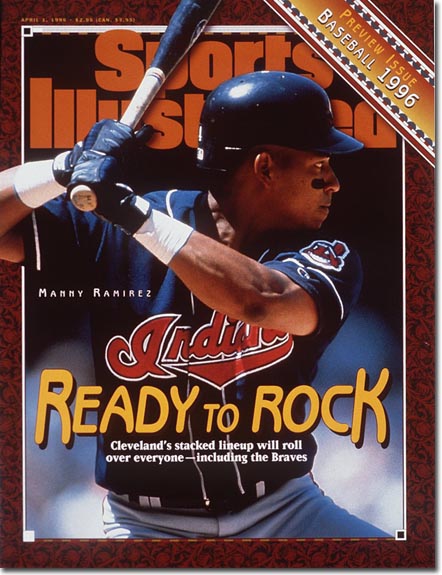 It was supposed to be the Indians year in 1996.
It was supposed to be the Indians year in 1996.
Coming off the franchise’s first World Series appearance since 1954, the Tribe was expected by many to roll through the American League and win the club’s first title since 1948.
In some ways that happened as the Indians won 99 games and finished 14.5 games ahead of the second-place White Sox. Charles Nagy led the rotation with 17 wins, followed by Orel Hershiser with 15.
But it was on offense that the team really rolled over everyone.
Albert Belle hit .311 with 48 home runs and 148 RBI, Jim Thome hit .311 with 38 home runs and 116 RBI, Manny Ramirez hit .309 with 33 home runs and 112 RBI, Kenny Lofton his .317 with 75 stolen bases, Omar Vizquel chipped in with a .297 average.
It’s almost painful to think about how loaded that team was.
But there were warning signs throughout the season.
The Indians signed Jack McDowell in the off season to add depth to the starting rotation. McDowell had been a 20-game winner in consecutive seasons for the White Sox just a few years before, but he won only 13 games for the Indians in ’96. And after going 12-5 in 1995, age finally caught up with the 41-year-old Dennis Martinez, who only made 20 starts, finishing at 9-6.
Belle was in the final year of his contract and talk about his impending free agency dominated the season. Controversy followed Belle, as it usually did, especially on May 31 when he leveled Milwaukee second baseman Fernando Vina with a forearm to the nose while breaking up a double play.
Relief pitcher Julian Tavarez added fuel to the fire by hitting a Brewer with a pitch in the ninth inning, igniting a bench-clearing brawl that saw Tavarez body slam umpire Joe Brinkman to the ground during the fracas.
The Indians shocked everyone at the trade deadline by sending three-time All Star Carlos Baerga, who at the time was batting .267 with 10 home runs and 55 RBI, to the Mets for Jeff Kent and Jose Vizcaino.
In the playoffs, the Indians drew the 88-win Baltimore Orioles, who quickly took a 2-0 lead as they rocked Hershiser in the opener and pulled out a late win in Game 2 thanks in large part to Kent’s inability to execute the fundamental play of catching a baseball thrown to him.
The Tribe rallied in Game 3 behind Belle’s grand slam, but lost the series when Baltimore’s Roberto Alomar homered off Jose Mesa in the 12th inning (shades of things to come in 1997).
Following the ’96 season, Belle filed for free agency and eventually signed with the White Sox for a then-record $55 million over five years. Before the start of the ’97 season the Tribe, fearing they could not resign him, traded Lofton to the Braves.
And just like that, one-third of the team’s lineup was gone.
13. Bernie selects the Browns
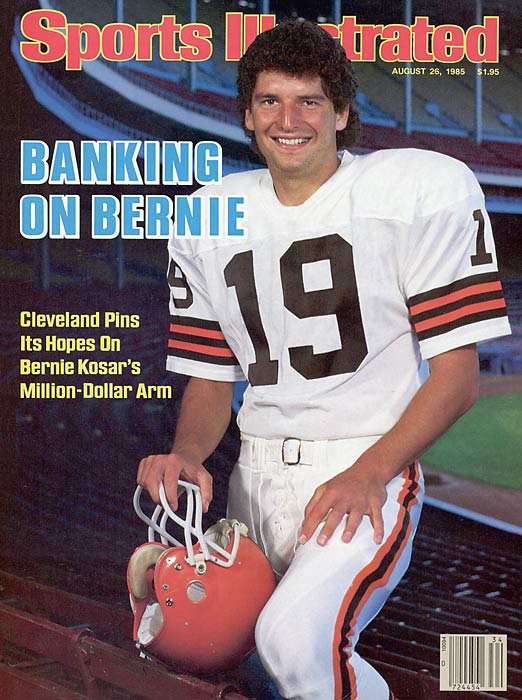 Heading into the 1985 season, the Cleveland Browns needed a quarterback. (Where have we heard that one before?) The team did not draft one in the regular NFL Draft, passing on Randall Cunningham, Frank Reich and Steve Bono, among others.
Heading into the 1985 season, the Cleveland Browns needed a quarterback. (Where have we heard that one before?) The team did not draft one in the regular NFL Draft, passing on Randall Cunningham, Frank Reich and Steve Bono, among others.
But there was still the supplemental draft and Miami quarterback Bernie Kosar.
The Buffalo Bills held the first pick in the regular draft and the supplemental draft. Buffalo selected defensive end Bruce Smith in the spring draft and, already owning the rights to quarterback Jim Kelly, had no need for another quarterback on the roster.
The Browns made six different trade proposals to Houston, which held the No. 2 pick, but the Oilers had no desire to make a trade with a division rival. So the Browns traded for Buffalo’s pick in the supplemental draft – giving up first-round picks in 1985 and 1986, a third-round pick in 1985 and a sixth-round pick in 1986 – taking a chance that Kosar, who was on schedule to graduate in the summer of 1985, would give up his final two years of college eligibility.
“College football was not challenging,” Kosar said according to Jonathan Knight’s 2006 book, Sundays in the Pound. “With our passing system at Miami, which was head and shoulders above any other college’s, after a while it was just too easy ... For me to grow at so slow a pace – what was the point?”
Kosar did not declare for the regular draft on purpose, which cheesed off the Minnesota Vikings, who had made the trade with Houston for the No. 2 pick that the Browns were unable to pull off with the intention of selecting Kosar. But little did they know that Kosar wanted to play for his hometown Browns.
The Vikings argued that Kosar should be eligible for the regular draft because everyone knew he was not going to return to Miami. The Oilers got in on the action, threatening to sue the NFL if Kosar was allowed to wait for the supplemental draft to declare his intentions, and Kosar’s agent threatened to sue if Kosar was forced to enter the regular draft.
Eventually then-NFL commissioner Pete Rozelle got everyone together in a room and, in a very Solomon-like decision, told Kosar the decision was up to him.
“Had either Buffalo or Cleveland been so inclined, they could have quietly prearranged such an understanding with the Kosar interests and refrained from making or announcing their trade until after the April 30 draft had passed,” Rozelle said.
After thinking about it for a couple of days, Kosar held a press conference in Miami to announce he would bypass the college draft and enter the supplemental draft, in effect choosing the Browns.
Three AFC Championship Game appearances and countless highlights later, there’s little doubt Kosar made the right choice.
12. Red Right 88
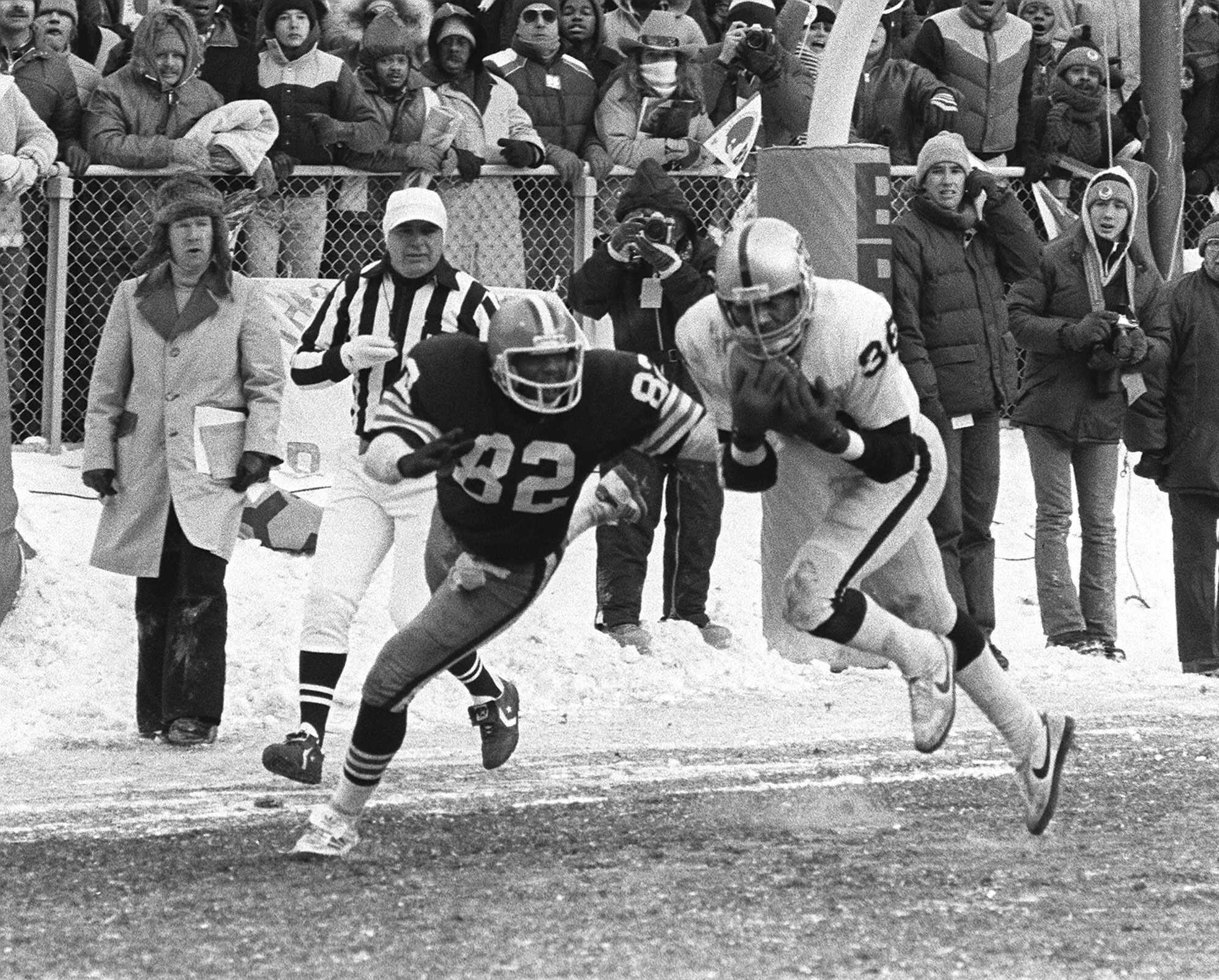 More than 30 years later, Cleveland fans still carry the scars of the Browns playoff game with the Oakland Raiders on Jan. 4, 1981.
More than 30 years later, Cleveland fans still carry the scars of the Browns playoff game with the Oakland Raiders on Jan. 4, 1981.
On that day, in a bitterly cold Municipal Stadium, fans who were too young to remember when the Browns won the NFL Championship in 1964 learned that you need to be tough to be a Cleveland fan as the Browns lost on a last-minute play that lives to this today in Cleveland’s sports history.
Red Right 88.
The Browns entered the 1980 season following a successful, most ultimately disappointing season in 1979 that saw the team finish at 9-7 and just miss out on a playoff berth. And while the team and fans were optimistic – this is Cleveland and the Browns, after all – no one could have expected what was to come as the Browns went 11-5.
After dropping the first two games to open the season, the Browns won seven-of-eight with six of the wins coming by seven points or less. On the season, 12 of the Browns 16 games were decided by a touchdown or less, including some in spectacular finishes, leaving that team to be forevermore the Kardiac Kids.
In a 26-21 win over Green Bay, Brian Sipe hit Dave Logan with a game-winning 46 yard touchdown pass with less than 20 seconds left to play.
The following week, the Browns beat Pittsburgh, 27-26, as Sipe repeated his fourth-quarter magic by hitting Greg Pruitt for a seven-yard touchdown and Ozzie Newsome for an 18-yarder to clinch the win.
In Week 14, the Browns beat the Jets, 17-14, as Sipe hit Pruitt on a five-yard scoring pass with a little over nine minutes left in the game and the defense held the rest of the way.
The following week the Vikings turned the tables on the Browns, as Tommy Kramer hit Ahmad Rashad with a Hail Mary pass that bounced off both Thom Darden and Ron Bolton before landing in Rashad’s hands for the game-winning score.
The Browns clinched the Central Division title on the final week of the season when Don Cockroft hit a 22-yard field goal with 1:29 remaining to beat Cincinnati.
After that kind of regular season, it’s no surprise the playoff game against Oakland played out the way it did.
A temperature 1 degree with a wind chill of 36 degrees below zero greeted fans to the first Browns playoff game since 1972. “I was hoping they would postpone it,” Browns cornerback Ron Bolton said in Jonathan Knight’s 2003 book, Kardiac Kids. “I didn’t think anyone could play in weather like that.”
Play they did and ironically it was Bolton who put the Browns on the scoreboard, intercepting pass and returning it 42 yards for the game’s opening score.
The game was back and forth until, following a fourth-and-one stop on their own 15-yard-line, the Browns offense got the ball back for one final drive, trailing 14-12. “It was virtually the same as it had been the entire year,” Logan said in Kardiac Kids. “We knew we were going to win. There was no doubt in anybody’s mind that we were going to go down and score.”
Sipe drove the Browns to the Raiders’ 14-yard-line and, facing a third down, called a timeout to confer with coach Sam Rutigliano. “I expected another running play to set up the field goal when I went to the sidelines,” Sipe said in Kardiac Kids. “I did question the call. A run seemed the logical thing then.”
Rutigliano was hesitant to turn the game over to kicker Don Cockroft, who had already missed an extra point and two field goals and would be kicking into the open end of the stadium. So he called for a pass, gambling that the Browns could cross up the Raiders, but issued one final piece of advice before Sipe went back onto the field.
“If the situation gets tight,” Rutigliano said in Kardiac Kids, “if the defense looks like Times Square on New Year’s Eve, if you feel at all that you have to force the ball, throw it into Lake Erie, throw it into some blonde’s lap in the bleachers, but don’t throw the ball into the middle of the field.”
Sipe didn’t throw the ball away, of course, instead he tried to hit Newsome cutting across the end zone, a play the Browns had “run for two years and have scored a lot of TDs on it,” according to Sipe.
But it wasn’t the Hall of Fame tight end that came down with the ball, but Oakland safety Mike Davis, ending the Browns storybook season and teaching numerous Browns fans what it means to be a Cleveland fan.
11. The Shot
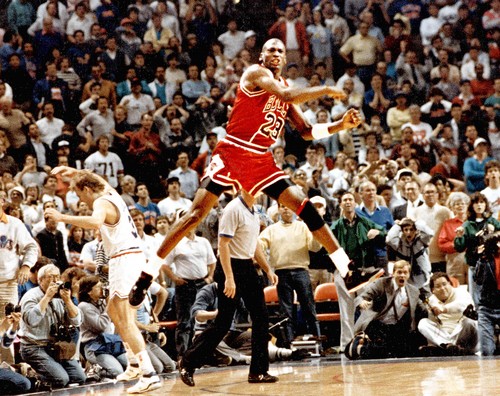 Thirteen years after the Miracle of Richfield season, the Cleveland Cavaliers put together another special season in 1988-89.
Thirteen years after the Miracle of Richfield season, the Cleveland Cavaliers put together another special season in 1988-89.
The Cavs won 57 games that year, a single-season record that stood for 20 years. Thirty-seven of those wins came at the Coliseum, where the Cavs ripped off a 22-game winning streak during the middle of the season and won by an average of 15.1 points.
“There are a lot of things I’ll remember about that season. The thing I’ll remember most, though, is coming onto the floor before so many of those games. Especially the home games,” center Brad Daugherty said in the 1994 book, From Fitch to Fratello. “There was this feeling we had. It was a feeling that we knew that everyone we played knew we were going to kick their asses. It was an amazing feeling, one that I never had before and one that I’ve never had since.”
The team was built around a young core of Daugherty, Mark Price, Ron Harper, John “Hot Rod” Williams and veteran Larry Nance, who was in his first full season with the Cavs.
There were several subplots to the season, including how the players would react to Price’s five-year, $5 million contract (he had signed an offer sheet from Washington that the Cavs had matched. Can you imagine getting an All Star point guard and one of the best three-point shooters for $1 million a year?), Harper’s return from an ankle injury the previous season, the team’s inability to find a viable small forward, and the fact that the Cavs were considered too “soft” for the Eastern Conference.
The Pistons, feeling the heat from a talented Cavs team that was 30-8 at the time, tested this theory during a late-January game. Detroit’s Bill Laimbeer punched Daugherty in the face and Rick Mahorn tried to pick a fight with Nance.
“For some reason people around the league think we are going to take the sort of crap the Pistons deal out,” Daugherty said in From Fitch to Fratello. “Well, we won’t, and now they know we won’t.” For good measure, Daugherty threw in the fact that Laimbeer “punches like a girl.”
Things came to a head the next time the two teams met, a 115-99 win by the Cavs that made them 3-0 against Detroit and 43-12 on the season (five games ahead of the Pistons). Midway through the fourth quarter, Mahorn viscously elbowed Price in the side of the head, leaving the Cavs point guard with a concussion.
The Cavs struggled after Price’s injury, going just 14-13 to close out the season. They would open the playoffs at home against Chicago, a team the Cavs were 6-0 against in the regular season. But while he may have recovered from the concussion, Price was battling a pulled groin muscle and Nance will still bothered by an ankle injury.
In predictable Cleveland fashion, the Cavs dropped the opener without Price in the lineup. The teams traded wins through the first four games, with the Cavs earning an overtime victory in Game 4 to force a deciding, and a fateful Game 5 at the Coliseum.
The game was tied six times and there were 20 lead changes, with eight of them coming in the final 2:30 of the game. Craig Ehlo hit a 3-pointer with 52 seconds left to put the Cavs up by one, which is when the game took on a decidedly Only in Cleveland turn of events.
After a missed jumper by Michael Jordan, the Cavs had a chance to push their lead to three points but Nance missed an 18-footer with 21 seconds left and Bulls rebounded. Jordan hit a jump shot to put the Cavs down by one with six seconds left. Cavs coach Lenny Wilkens then drew up one of the best plays in NBA playoff history that saw Ehlo inbound to Nance, get the ball back and hit a layup to put the Cavs up by one with three seconds left (in the process, Ehlo took a slap to the head from Jordan that, naturally, was missed by the officials).
Cavs fans everywhere know what happened next. Jordan got the ball and hit an 18-foot jumper over Ehlo to seal and the win and end the Cavs season.
“We played him perfectly,” Daugherty said in Jonathan Knight’s 2009 book, Classic Cavs. “We had a man in front of him, a man behind him, we jumped at him as he shot and made him change his shot in mid-air, and still ...”
Little did Cavs fans know, but not only was that series probably the best chance for the Cavs to beat the Bulls, but it was the final chance for that particular team as, much like the ’95 Indians, the Cavs would undergo unexpected changes the following season.
- NBA Announces 2013-2014 Schedule
- Browns Ink Sharknado
- Sharknado A No-Show For Rookie Camp
- Trent Richardson Out Until Training Camp
- Browns Sign Brandon Jackson
- Carrasco Suspended Eight Games
- Browns Add to Wide Receiver Depth with David Nelson
- Browns Need to Learn from Past Draft Mistakes
- Browns Release Chris Gocong and Usama Young
- Browns Missing on Grimes Disappointing, But Not The End
The TCF Forums
- Official- Browns Coach Search/Rumors
HoodooMan (Tuesday, January 21 2014 1:36 PM) - Movies coming out
rebelwithoutaclue (Tuesday, January 21 2014 12:56 PM) - 2015 Recruiting
jclvd_23 (Tuesday, January 21 2014 12:38 PM) - The 2014 Offseason Thread
Larvell Blanks (Tuesday, January 21 2014 12:25 PM) - Chris Grant's first 3 drafts
Kingpin74 (Tuesday, January 21 2014 10:13 AM) - Mike Brown
YahooFanChicago (Monday, January 20 2014 11:15 PM) - 2014 Hoops Hockey Hijinx
jpd1224 (Monday, January 20 2014 4:44 PM) - 2014 Recruiting
jclvd_23 (Monday, January 20 2014 2:26 PM) - Wish List - #4 Pick
Hikohadon (Monday, January 20 2014 1:26 PM) - #1 overall pick Anthony Bennett
TouchEmAllTime (Sunday, January 19 2014 1:28 PM)



